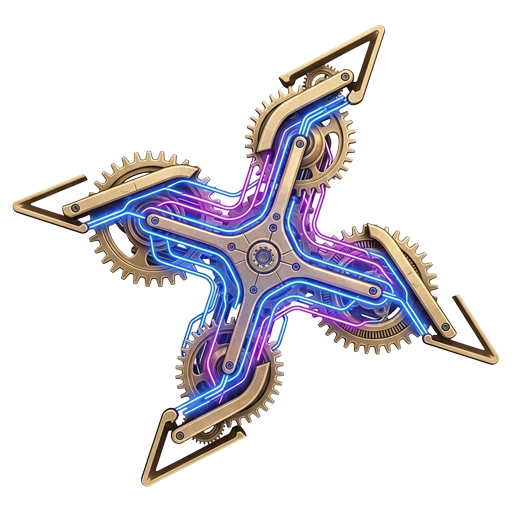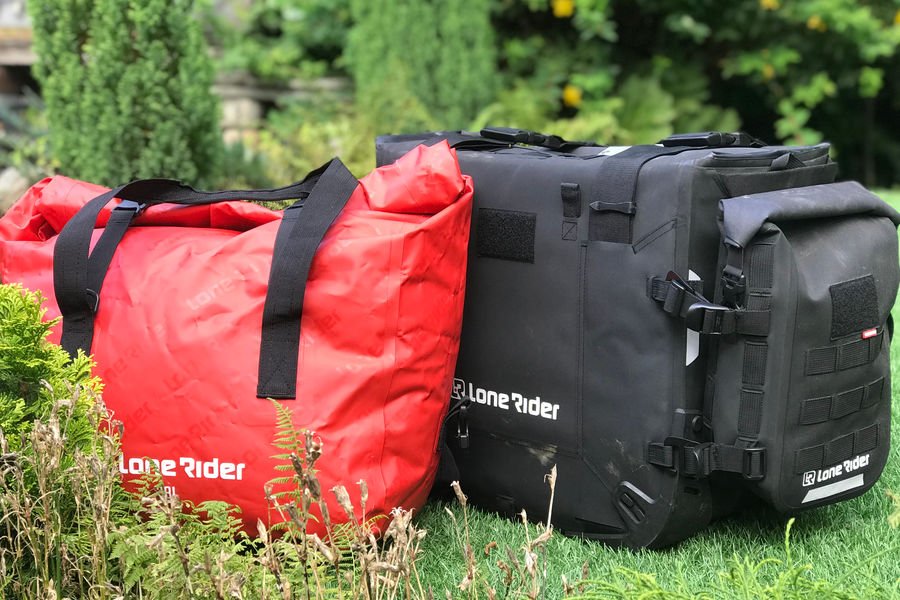In the calculus of adventure motorcycling, the equation for effective load-bearing has long been a compromise. Riders have traditionally been forced to choose between the impact-absorbing, forgiving nature of soft luggage and the rigid, structural security of hard-sided panniers. This dichotomy has defined the market, leaving a gap for a solution that marries the virtues of both. Lone Rider’s Rackless MotoBags enter this space not as another iteration, but as a compelling thesis on how to carry gear without compromise. By engineering a semi-rigid system that eliminates the need for bulky steel pannier frames, Lone Rider challenges the fundamental assumptions of motorcycle-based travel.
This is not merely a set of bags; it is an integrated system designed to fuse to the motorcycle’s chassis, promising the stability of hard cases with the weight savings and reduced-width profile of a true rackless setup. The core of the design is a synthesis of advanced materials and intelligent structural engineering, a clear attempt to create a new category of adventure luggage. We will deconstruct this system, moving beyond the spec sheet to analyze its structural integrity, material science, and real-world performance under the duress of adventure.
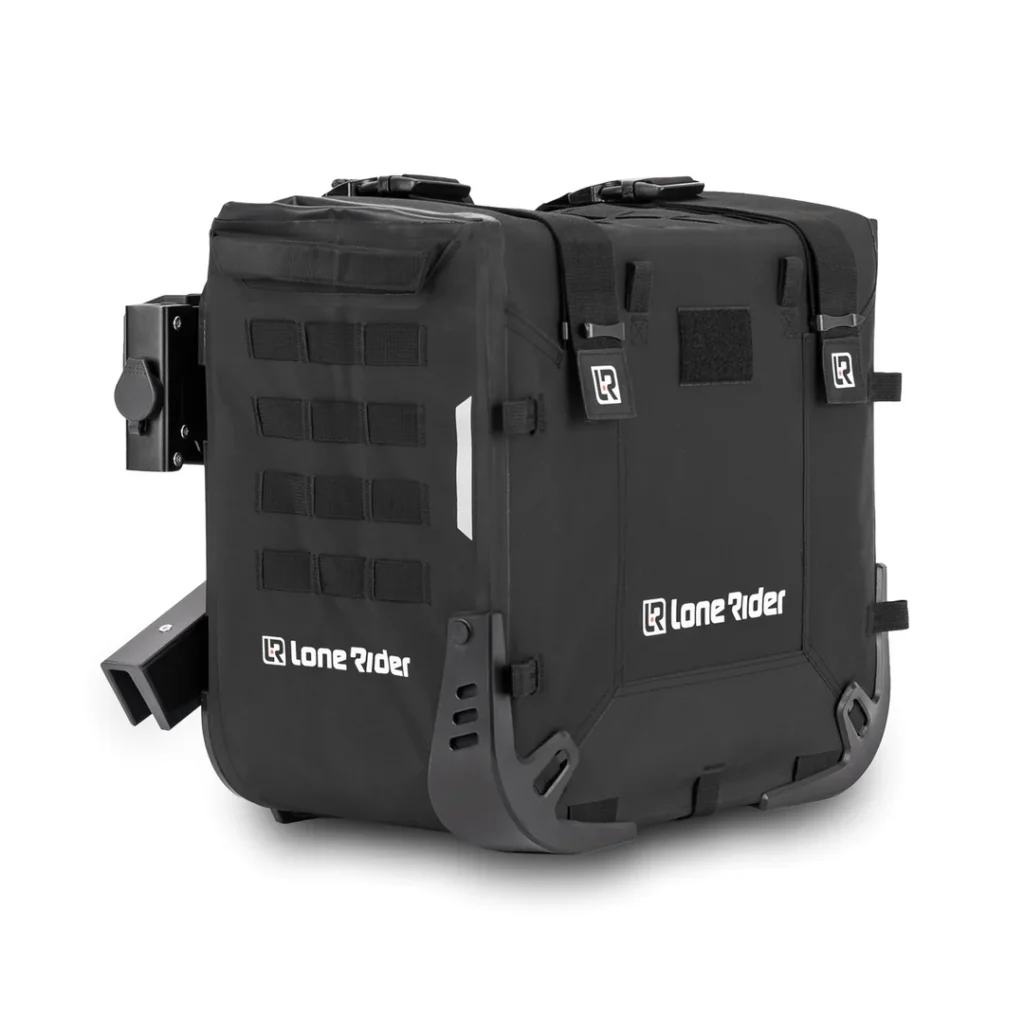
Design & Materials: The Hybrid Exoskeleton
The defining characteristic of the Lone Rider Rackless MotoBags is their semi-rigid construction. This is not the amorphous form of a typical throw-over saddlebag. Instead, Lone Rider employs a composite approach. The main body is constructed from Hypalon, a high-performance synthetic rubber renowned for its resistance to chemicals, temperature extremes, and ultraviolet light. This choice of primary material provides a flexible yet incredibly durable outer skin.
Internally, a rigid polyethylene board and plate are inserted, creating a stiffened exoskeleton. This internal framework forces the bags to hold their shape, much like a traditional pannier. This has two significant implications for the user. First, it allows for methodical packing and easy access to gear; the bags don’t collapse when empty. Second, it provides a predictable and stable structure that is crucial for maintaining vehicle dynamics, especially in technical terrain.
The closure system is a roll-top design, a proven method for ensuring a completely waterproof and dustproof seal without relying on fallible zippers or rubber gaskets. This is secured by heavy-duty straps and Duraflex buckles, demonstrating an understanding that failure points often lie in the small components.
Externally, the system is a study in functional utility. M.O.L.L.E. panels are integrated onto the front, back, and top surfaces, allowing for the modular attachment of smaller accessory bags and pouches. This transforms the pannier from a simple container into a versatile, expandable platform. At the most vulnerable points—the lower corners—sacrificial rubber protectors are bolted on, a pragmatic acknowledgment of the realities of off-road drops.
The most critical design element, however, is the mounting system. The bags are designed to attach directly to the motorcycle’s frame and existing luggage mounting points, forgoing the weight and width penalty of traditional pannier racks. For specific models, like the BMW GS series, it utilizes the Vario system attachment points, creating a factory-level integration that is both secure and aesthetically clean. This direct-to-chassis philosophy is the system’s core innovation.
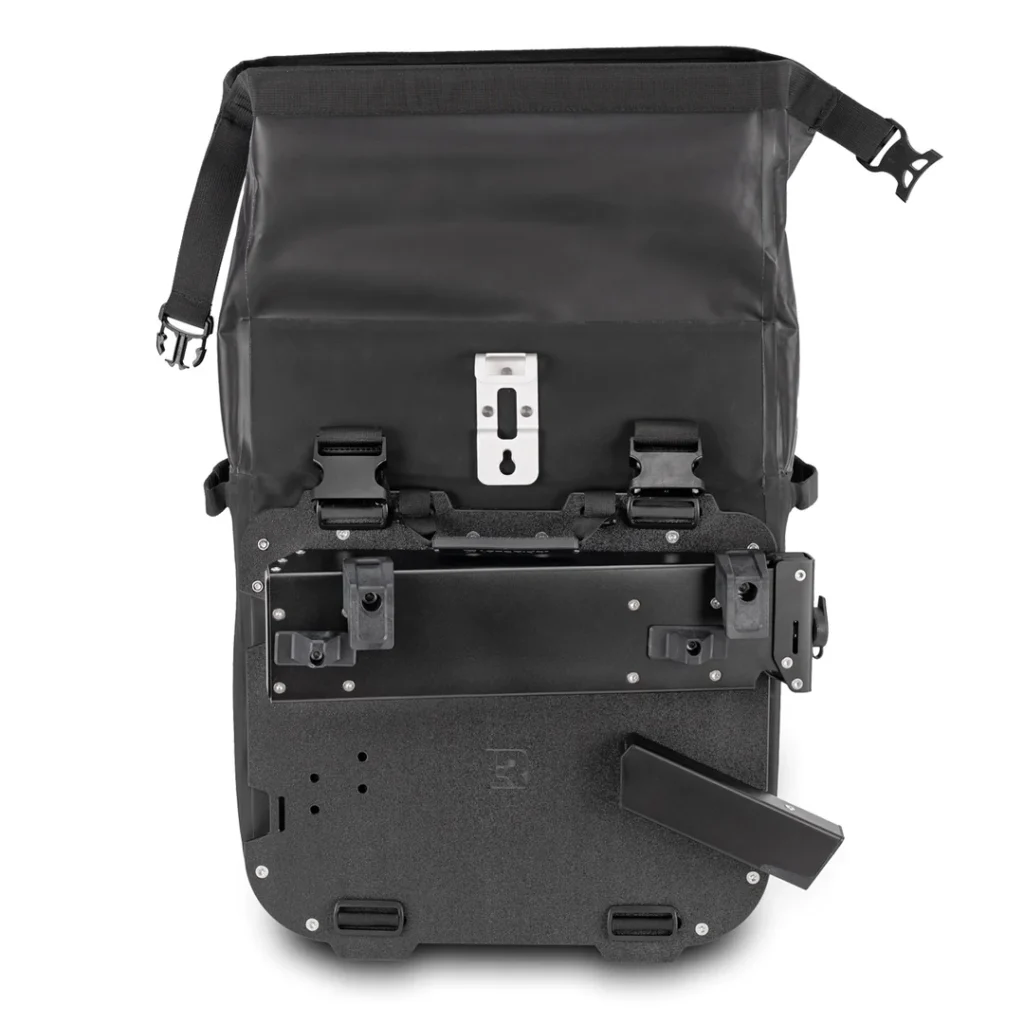
Technical Specifications: An Engineered Solution
- Capacity: Asymmetrical set of 31 Liters (exhaust side) and 38 Liters (non-exhaust side), providing a total of 69 liters.
- Weight (Complete System):
- 38L Bag: 7.27 kg (16.03 lbs)
- 31L Bag: 7.47 kg (16.47 lbs)
- Primary Material: Hypalon fabric body.
- Internal Structure: Polyethylene inner stiffening board and plate.
- Closure: Heavy-duty roll-top with Duraflex Warrior buckles.
- Mounting System: Integrated rackless quick-release system utilizing native motorcycle frame attachment points.
- Weatherproofing: 100% waterproof and dustproof roll-top design.
- Modularity: Integrated M.O.L.L.E. webbing on all faces for accessory expansion.
- Security: Lockable design with included combination padlocks.
Real-World Performance & Usability: Beyond the Blueprint
Theory and materials are rendered meaningless without execution in the field. The Rackless MotoBags’ performance hinges on the stability of their mounting system. By integrating directly with the bike’s subframe, the system provides a level of rigidity that is uncharacteristic of soft luggage. The absence of a separate steel rack eliminates a major source of flex and potential failure, creating a single, unified load-bearing structure. On uneven terrain, this translates to a more planted and predictable feel, as the mass is kept tight and low against the machine’s center of gravity.
Waterproofing is absolute. The combination of Hypalon and a properly executed roll-top closure is a time-tested formula used in marine and whitewater applications. In driving rain or deep water crossings, the integrity of the main compartment is not a point of concern. The provided inner liner bags, constructed from 500D PVC Tarpaulin, add a second layer of defense and simplify the process of transporting gear away from the bike.
From a usability standpoint, the semi-rigid design is a significant advantage over conventional soft bags. Living off the bike becomes more organized. There is no struggle to hold a shapeless bag open while searching for a specific item. The structured form allows for a level of organization akin to hard panniers, but with one crucial difference: impact absorption. In a fall, the Hypalon body and internal structure are designed to flex and absorb impact, reducing the chance of the bag shattering or, more critically, transferring damaging leverage to the motorcycle’s subframe—a known and costly risk associated with aluminum boxes.
The trade-off for this robust, rack-free design is the weight. At over 7 kg per side, the system is substantially heavier than minimalist soft saddlebags. However, this comparison is misleading. When factoring in the 4-6 kg weight of a typical steel pannier rack required for other systems, the MotoBags’ all-in weight becomes highly competitive, and in some cases, lighter than a rack-and-bag combination from competitors.
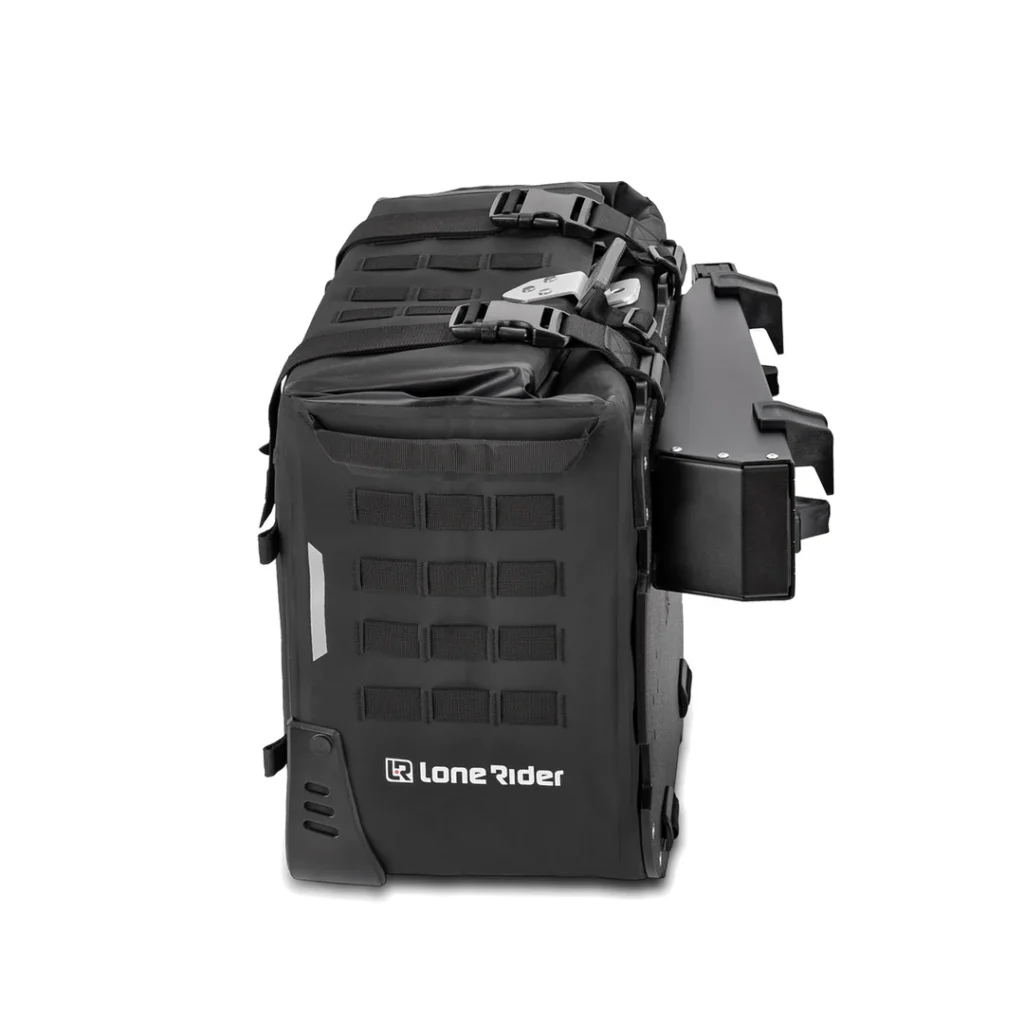
The Verdict: A New Apex in Adventure Luggage
The Lone Rider Rackless MotoBags are not an incremental improvement; they represent a fundamental re-evaluation of how to carry equipment on an adventure motorcycle. They successfully hybridize the best attributes of hard and soft luggage systems while mitigating their most significant drawbacks. The design delivers the structural integrity, security, and all-weather protection of hard panniers without the associated weight penalty and catastrophic failure potential of rack-and-box setups.
By eliminating the external frame, Lone Rider has engineered a lighter, narrower, and more integrated solution. The use of premium, purpose-driven materials and a design philosophy grounded in real-world functionality results in a product that inspires confidence. For the serious adventure rider who demands absolute reliability and functional utility without compromising vehicle dynamics, the Rackless MotoBags stand as the new benchmark. They are not merely bags, but an essential component of a purpose-built adventure machine.
